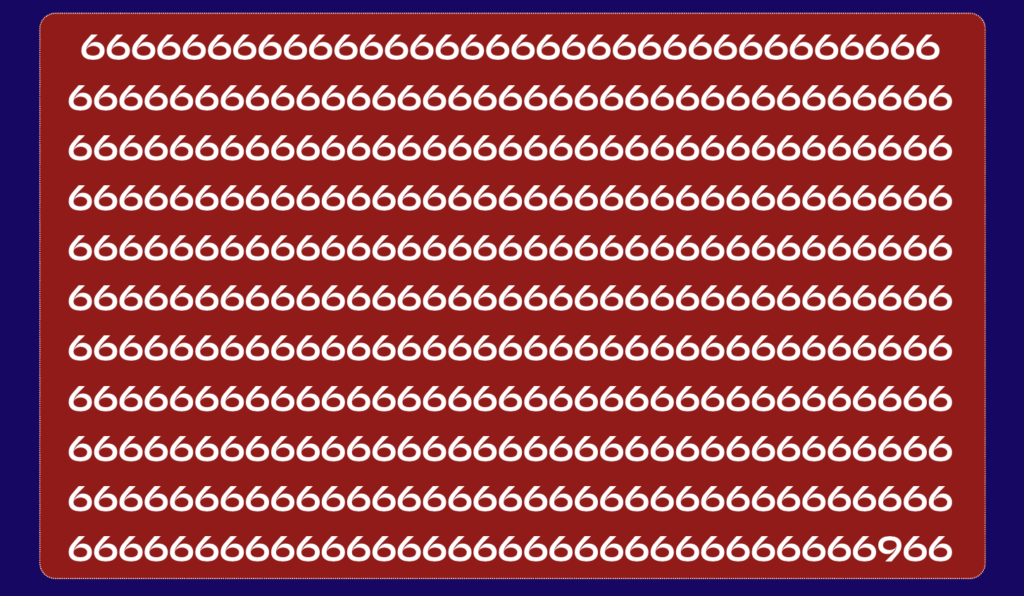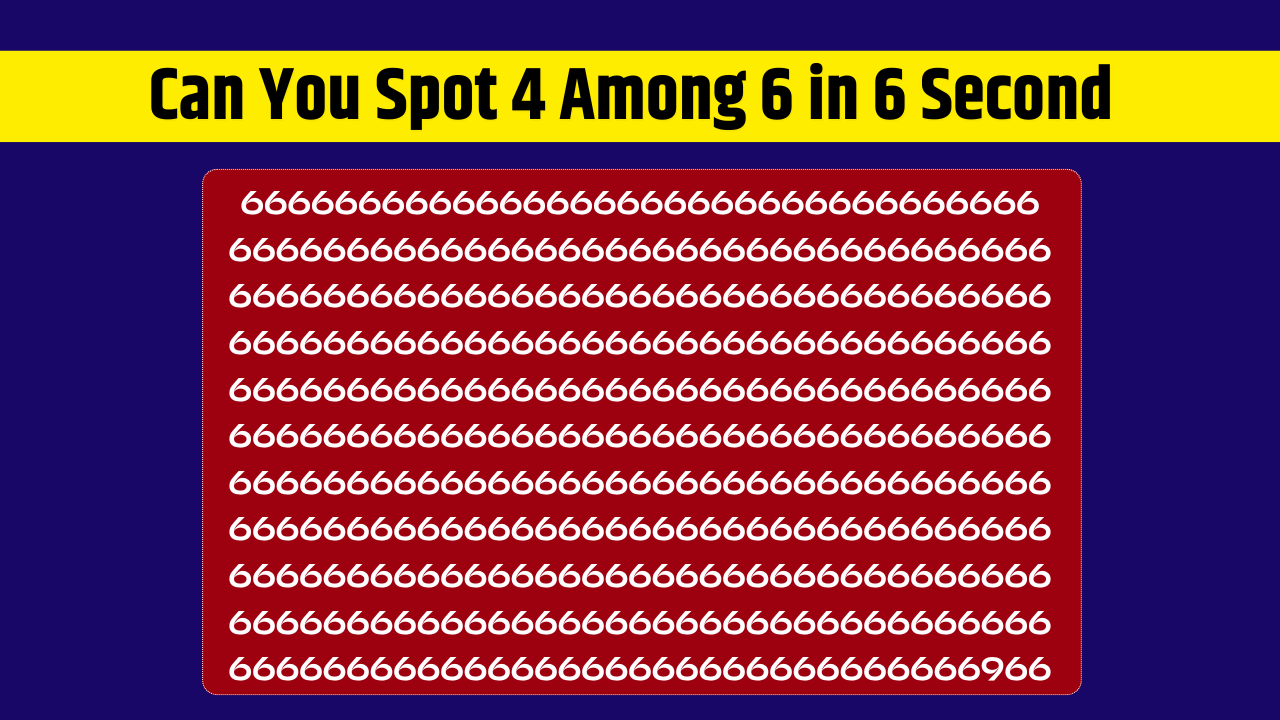Optical illusions are more than just visual tricks—they’re brain workouts that reveal how we perceive the world around us. These illusions occur when our brain interprets visual information in ways that don’t align with reality, often leading to surprising and fascinating results.
They play with light, shapes, colors, and patterns to confuse or challenge our senses. Whether used in psychology, art, or just for fun, optical illusions are powerful tools to test perception, sharpen observation skills, and even train the brain.
Spot the Difference: Can You Find the Hidden 4 !
Ready for a quick test of your attention to detail?
In this puzzle, you’ll see a field of number 6s arranged in a tight pattern. But lurking somewhere in this sea of sixes is a single, sneaky number 9. At first glance, it might seem like they’re all the same—but look again.
Your challenge:
Find the number 4 in 6 seconds or less.
Why Is This So Tricky?
The digits 4 and 6 can appear strikingly similar in certain fonts and sizes, especially when viewed quickly or in bulk. Our brain, wired to detect familiar patterns fast, often overlooks subtle differences. This phenomenon is called pattern recognition bias—we focus on what we expect to see, not what’s actually there.
The Science Behind It
When you scan an image like this, your brain uses shortcuts to process information rapidly. It assumes the repetition of similar shapes means everything is identical, making it easy to miss slight changes.
This illusion forces your brain to slow down, focus, and re-evaluate assumptions. It’s the same kind of mental skill used in tasks that require precision, like editing, programming, or even driving.
Did You Find the 4?
If you found the number 4 within the 6-second window, give yourself a well-earned pat on the back—your visual acuity and focus are above average!
If you didn’t catch it right away, don’t stress. These challenges are designed to be difficult and help train your brain to notice subtle differences. With practice, you’ll get faster and more accurate at solving these kinds of puzzles.

The hidden 4 is located toward the right side of the image—blink and you’ll miss it. Once it’s pointed out, it seems obvious. That’s the magic (and frustration) of optical illusions.
Why Try These Puzzles?
Engaging with visual illusions like this one helps improve:
- Focus and attention
- Visual processing speed
- Short-term memory
- Pattern recognition
It’s not just about fun—these exercises can actually strengthen your brain.
FAQs
What makes the number 9 hard to see?
Because the 6s and 4s share curved shapes, especially in certain fonts, they can appear nearly identical when placed together in a dense grid.
Is this an official IQ test?
Not exactly. While it can reflect aspects of visual intelligence and focus, this is more of a brain teaser than a scientific IQ assessment.
How can I get better at these puzzles?
Practice regularly! The more you expose your brain to these types of challenges, the quicker and more accurately it will process similar visuals in the future.
Why do our brains fall for illusions like this?
Our brains use shortcuts to process massive amounts of visual data. These shortcuts are usually efficient but can miss small inconsistencies—like one number that doesn’t belong.







